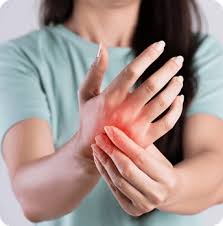Bone infections, called osteomyelitis, occur when harmful bacteria or fungi invade the bone tissue. Though they may develop slowly, recognizing early signs can help address the issue before it worsens. Here are some potential early indicators of skin and bone infections, noting the physical symptoms to look out for:
Persistent Pain Around the Bone
One of the first noticeable signs may be localized and continuous pain. This discomfort doesn’t ease with rest or typical over-the-counter remedies. The pain often feels deep and dull, but can intensify after physical activity. If pain interferes with daily tasks or lingers without improvement, it’s worth seeking help.
Redness and Swelling Around the Area
Another potential indicator is visible changes to the skin around the affected area. Redness, warmth, and noticeable swelling could appear, signaling inflammation or infection beneath the surface. This might not always look severe initially, but observing these changes closely is beneficial.
These symptoms often signify that the body responds to an underlying issue, an injury, or a localized infection. Make sure you monitor any progression of swelling or redness, as worsening symptoms could indicate a need for medical attention. Applying a cold compress or elevating the area can help reduce swelling in the short term, but persistent or severe symptoms should not be ignored.
Limited Mobility or Difficulty Bearing Weight
If the infection impacts a limb or joint, movement may become challenging. You might notice stiffness, a reduced range of motion, or discomfort when attempting simple actions. Difficulty placing weight on the area, such as limping or avoiding a previously painless activity, raises a flag.
- Increased stiffness in the affected area, making it hard to bend or straighten joints.
- Difficulty walking or standing for extended periods without experiencing pain.
- Reduced strength in the impacted limb leads to challenges in daily tasks.
- Trouble gripping, lifting, or holding objects if the infection affects the hands or wrists.
- Limited endurance during physical activities due to discomfort or swelling.
Unexplained Fatigue or Feeling Run Down
Skin and bone infections aren’t always confined to physical symptoms near the affected area. Fatigue or an overall sense of low energy that seems out of proportion to your usual activity level might reflect something deeper. Feeling unusually tired or run down without a clear explanation could be related to the body’s response to an infection.
These feelings of fatigue may also be accompanied by other systemic symptoms such as fever or chills, which can further indicate an underlying issue. It’s essential to pay attention to how long these symptoms persist and whether they worsen over time. Consulting with a healthcare professional can help identify the root cause and ensure timely treatment if an infection is present.
Seek Help for Skin and Bone Infections
Being able to recognize these initial symptoms helps support your overall health. While they might not always point to a bone infection, staying informed about physical changes helps you stay mindful of what your body communicates. Prompt attention to persistent or unusual symptoms offers clarity and may allow possible problems to be addressed effectively. Should concerns arise, schedule an appointment with a healthcare professional.
- FREHF – The Revolutionary Future Of Human-Centered Technology!
- Adsy.Pw/Hb3 – Boost Your SEO And Drive More Traffic!
- Fitness Based Vacations By Timeshealthmage.com!
- TimesHealthMag Tips For Improving Sleep Quality – Expert Advice For Better Rest!
- How TimesHealthMage Helps Improve Your Lifestyle Habits!


Leave a Reply